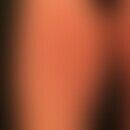Synonym(s)
HistoryThis section has been translated automatically.
Sontheimer, 1979
DefinitionThis section has been translated automatically.
Independent, photosensitive (photosensitivity is to be expected in about 80% of patients - Black et al. 2002) subgroup of cutaneous lupus erythematosus with relapsing activity and occurrence of disseminated, red, mostly blurred, homogeneously disc-shaped, but also anular, saturated red plaques, which occur preferentially in light-exposed skin areas.
The light-relatedness results from the "macro-pattern", which usually (not always) omits non-UV-exposed skin areas (note: there is not always a temporal relationship between the appearance of the skin changes and the previous UV exposure; this may have taken place months before!)
There is a higher risk of systemic involvement than in the chronic discoid variant(lupus erythematosus chronicus discoides), which means that this variant can occur with or without systemic lupus erythematosus (Niebel D et al. 2023).
In older patients, SCLE can be associated with malignancies (paraneoplastic subacute cutaneous lupus erythematosus), with non-Hodgkin's lymphomas and carcinomas of the solid organs being observed most frequently (Lazar AL 2022).
You might also be interested in
EtiopathogenesisThis section has been translated automatically.
Exposure to the sun. There is a varying degree of UV sensitivity.
Drugs are assumed to be the trigger in about 25-30% of cases. Possibly due to abnormalities in drug metabolism (polymorphism of hepatic acetyltransferase, slow acetylators) or drugs that have a photosensitizing effect per se. Increased susceptibility in the presence of HLA types B8, DR2, DR3, DQw2, DRw52 appears to be pathogenetically relevant.
ManifestationThis section has been translated automatically.
Predominantly affects fair-skinned (Caucasian) women; initial manifestation between 30-50 years of age.
LocalizationThis section has been translated automatically.
Light-exposed areas: face (leaving out the mid-face and periorbicular region rather), upper thorax, arms.
ClinicThis section has been translated automatically.
Integument: Acute, chronically active, multiple or numerous, disseminated, sharply or blurredly defined, 0.2-5.0 cm (rarely > 10.0 cm), disc-shaped, anular or gyrated, red or red-brown spots or plaques with a smooth or crusty surface. Blistering is possible.
Erythema multiforme-like skin lesions are also possible. In these cases, clinical differentiation from Rowell's syndrome is difficult.
Characteristic are (temporarily persistent) hypopigmentation (more rarely also hyperpigmentation) after healing of the lesions.
Extracutaneous manifestations:
- renal (16%)
- hematologic pathology (8%)
- Minor visceral involvement with polyarthritis, serositis (1%)
- cerebrovascular complications are rarer.
The clinical picture of drug-induced SCLE is identical, but usually occurs in the form of a disseminated erythematous exanthema.
LaboratoryThis section has been translated automatically.
At 75% higher titre ANA, more rarely anti-DNA antibodies. Particularly characteristic is the detection of anti-SSA/Ro-antibody (about 50% of cases) and anti-SSB/La-antibody. Possibly leukopenia (cytopenia), hypergammaglobulinemia.
HistologyThis section has been translated automatically.
Basically as in cutaneous lupus erythematosus, but less marked hyperkeratosis. Atrophic epithelium, orthokeratosis, vacuolar degeneration of basal epithelial cells, civatte-bodies (interface dermatitis). Profuse dermal edema with mucin deposition, dense perivascularly oriented lymphocytic infiltrate.
Direct ImmunofluorescenceThis section has been translated automatically.
DiagnosisThis section has been translated automatically.
The diagnosis of subacute cutaneous lupus erythematosus lupus erythematosus is based on the patient's history, clinical presentation, laboratory tests, and skin biopsy specimens.
External therapyThis section has been translated automatically.
External glucocorticoids (e.g. Dermatop) are only moderately successful. Light protection is important - both in the UVB and UVA range!
Internal therapyThis section has been translated automatically.
Initial glucocorticoids such as prednisone (e.g. Decortin) 20-40 mg/day p.o., possibly higher doses. Alternatively cloprednol (Syntestan) 10-15 mg/day. Reduce dosage depending on the clinic. An exanthematic acute situation can be bridged well with this treatment approach.
Antimalarials should be the first choice for systemic therapy, e.g. chloroquine (start with 250 mg/day, reduce to 250 mg every 2nd day after 2-4 weeks).
Alternative: Thalidomide and lenalidomide, systemic retinoids, dapsone and methotrexate are second choice options in selected cases.
Alternative: The therapeutic options of third choice are mycophenolate mofetil and other immunosuppressive drugs.
Alternative: The monoclonal antibody belimumab, which targets soluble human B-cell activating factor, is a fourth-choice treatment for refractory cases.
Alternative: In individual cases, satisfactory results have been achieved with deucravacitinib (6mg/day p.o.).
Progression/forecastThis section has been translated automatically.
Quoad vitam favorable. Chronic course is characteristic.
Skin lesions usually heal completely and without scarring. Hypo- or hyperpimgentations are possible.
More than 50% of patients are positive for more than 4 ARA criteria (see lupus erythematosus, systemic).
About 15% of patients develop internal involvement (arthralgias, nephritis, cardiac involvement, hematologic complications) during the course of their disease and fulfill the criteria of systemic lupus erythematosus.
Note(s)This section has been translated automatically.
There are several authors who classify subacute cutaneous lupus erythematosus as a facultative paraneoplastic dermatosis. SCLE patients should undergo thorough cancer screening to rule out an underlying malignancy with a clinically silent evolution (Lazar AL 2022).
The following drugs have been described in connection with the initiation or exacerbation of SCLE: non-steroidal anti-inflammatory drugs (e.g. piroxicam), tetracyclines, antifungals (griseofulvin; terbinafine), antihypertensives (captopril, cilazapril, hydrochlorothiazide), proton pump inhibitors. Also described are: spironolactone, cinnarizine, D-penicillamine, interferon beta, ranitidine, antidiabetics (sulfonylureas), doxorubicin, docetaxel, carboplatin (see below cytostatics, extravasates) and the PD-1 inhibitor tislelizumab.
Drug-induced CLE (DI-CLE) is also classified as a subgroup of CLE (Di-CLE) and usually appears as SCLE. Discoid skin lesions are rarely drug-induced.
LiteratureThis section has been translated automatically.
- Amato L et al (2003) Subacute cutaneous lupus erythematosus in childhood. Pediatr Dermatol 20: 31-34
- Black DR et al. (2002) Frequency and severity of systemic disease in patients with subacute cutaneous lupus erythematosus. Arch Dermatol 138: 1175-1178
- Bottomley WW et al. (1995) Methotrexate for the treatment of severe mucocutaneous lupus erythematosus. Br J Dermatol 133: 311-314
- Callen JD (2009) Clinically relevant information about cutaneous lupus erythematosus. Arch Dermatol 145: 316-319
- Farhi D et al (2006) Terbinafine-induced subacute cutaneous lupus erythematosus. Dermatology 212: 59-64
- García AG et al. (2014) Subacute cutaneous lupus erythematosus associated with pemetrexed plus carboplatin chemotherapy. J Clin Rheumatol 20:449-450
- Khokher W et al. (2022) Subacute Cutaneous Lupus as a Paraneoplastic Manifestation of Non-Hodgkin Lymphoma. J Investig Med High Impact Case Rep 10:23247096211063066.
- Lazar AL (2022) Subacute cutaneous lupus erythematosus: A facultative paraneoplastic dermatosis. Clin Dermatol 40:728-742.
- Mutasim DF (2003) Severe subacute cutaneous lupus erythematosus presenting with generalized erythroderma and bullae. J Am Acad Dermatol 48: 947-949
- Niebel D et al. (2023) Cutaneous Lupus Erythematosus: An Update on Pathogenesis and Future Therapeutic Directions. Am J Clin Dermatol 24:521-540.
- Pramatarov K et al. (2000) Subacute cutaneous lupus erythematosus presenting with generalized poikiloderma. J Am Acad Dermatol 42: 286-288
- Sontheimer RD et al. (1979) Subacute cutaneous lupus erythematosus: a cutaneous marker for a distinct lupus erythematosus subset. Arch Dermatol 115: 1409-1415
- Wollenberg A et al (1991) Thiazide diuretic-induced subacute cutaneous lupus erythematosus. Dermatology 42: 709-712
- Tebbe B et al. (1994) Course and prognosis of subacute cutaneous lupus erythematosus. A prospective study of 34 patients. Dermatology 45: 690-695
- Wollina U et al. (1989) On the spectrum of dermatologic manifestations in patients with subacute cutaneous lupus erythematosus and their nosologic significance. Act Dermatol 15: 208-212
Incoming links (16)
Annular dermatoses; Chloroquine; Drug induced cutaneous lupus erythematosus; Ena; Erythema multiforme majus; Lupus erythematosus anular gyrated; Lupus erythematosus drug-induced; Lupus erythematosus tumidus; Neonatal lupus erythematosus; Neutrophilic figurate erythema; ... Show allOutgoing links (22)
Autoantibodies; Belimumab; Chloroquine; Cloprednol; Cutaneous lupus erythematosus (overview); Deucravacitinib; Erythema multiforme, minus-type; Glucocorticosteroids; Glucorticosteroids topical; Griseofulvin; ... Show allDisclaimer
Please ask your physician for a reliable diagnosis. This website is only meant as a reference.






































